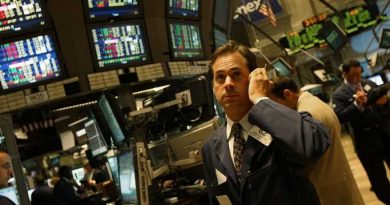U.S. economy sheds jobs in December; unemployment rate at 6.7%
WASHINGTON (Reuters) -The U.S. economy shed jobs for the first time in eight months in December as the country buckled under an onslaught of COVID-19 infections, suggesting a significant loss of momentum that could temporarily stall the recovery from the pandemic.
Nonfarm payrolls decreased by 140,000 jobs last month, the Labor Department said on Friday. Data for November was revised up to show 336,000 jobs added instead of 245,000 as previously reported. That was the first decline in payrolls since April. The economy has recovered just over half of the 22.2 million jobs lost in March and April.
The unemployment rate was at 6.7% in December.
Despite the labor market weakness, the economy is unlikely to fall back into recession, with a backstop of nearly $900 billion in additional pandemic relief approved by the government last week.
More fiscal stimulus is expected now that the Democrats have gained control of Senate, boosting the prospects for President-elect Joe Biden’s legislative agenda. Congress on Thursday formally certified Biden’s election victory hours after hundreds of President Donald Trump’s supporters stormed the U.S. Capitol.
There is also optimism that the roll out of coronavirus vaccines will be better coordinated under the Biden administration. COVID-19 cases in the United States have jumped to more than 21 million, with the death toll exceeding 356,000 since the virus first emerged in China in late 2019, according to the U.S. Centers for Disease Control and Prevention.
Still, the employment report joined a raft of other weak data on consumer confidence and spending in underscoring the virus’ brutal impact on the economy, which plunged into recession in February.
“The economy will be on the soft side for the next several months, but with fiscal support and vaccines, the economy should kick into higher gear by summer,” said Mark Zandi, chief economist at Moody’s Analytics in West Chester, Pennsylvania.
The economy is believed to have expanded at around a 5% annualized rate in the fourth quarter, with the bulk of the rise in gross domestic product seen coming from inventory investment. It grew at a historic 33.4% pace in the third quarter after shrinking at a 31.4% rate in the April-June period, the deepest since the government started keeping records in 1947.
Source: Read Full Article

